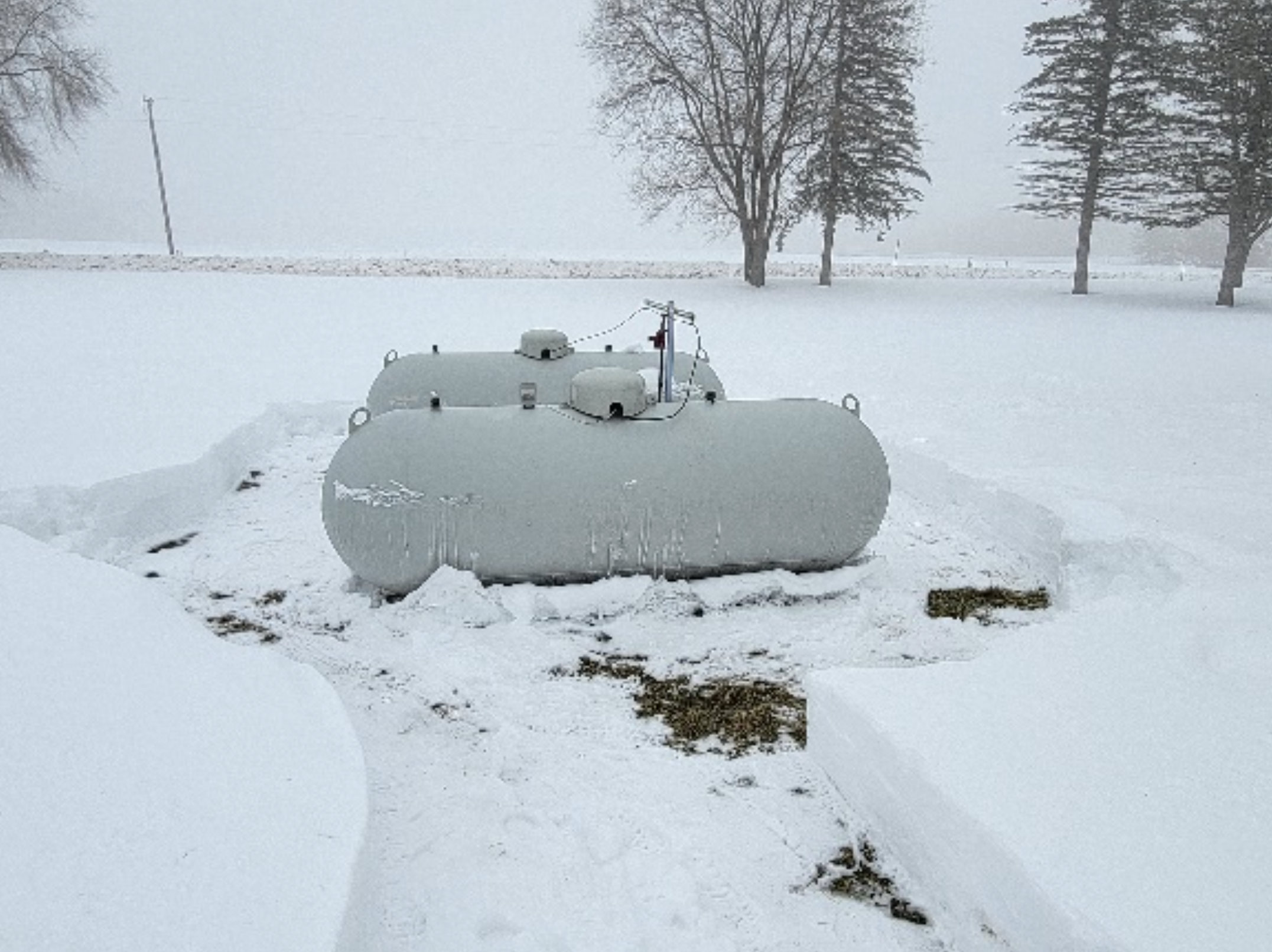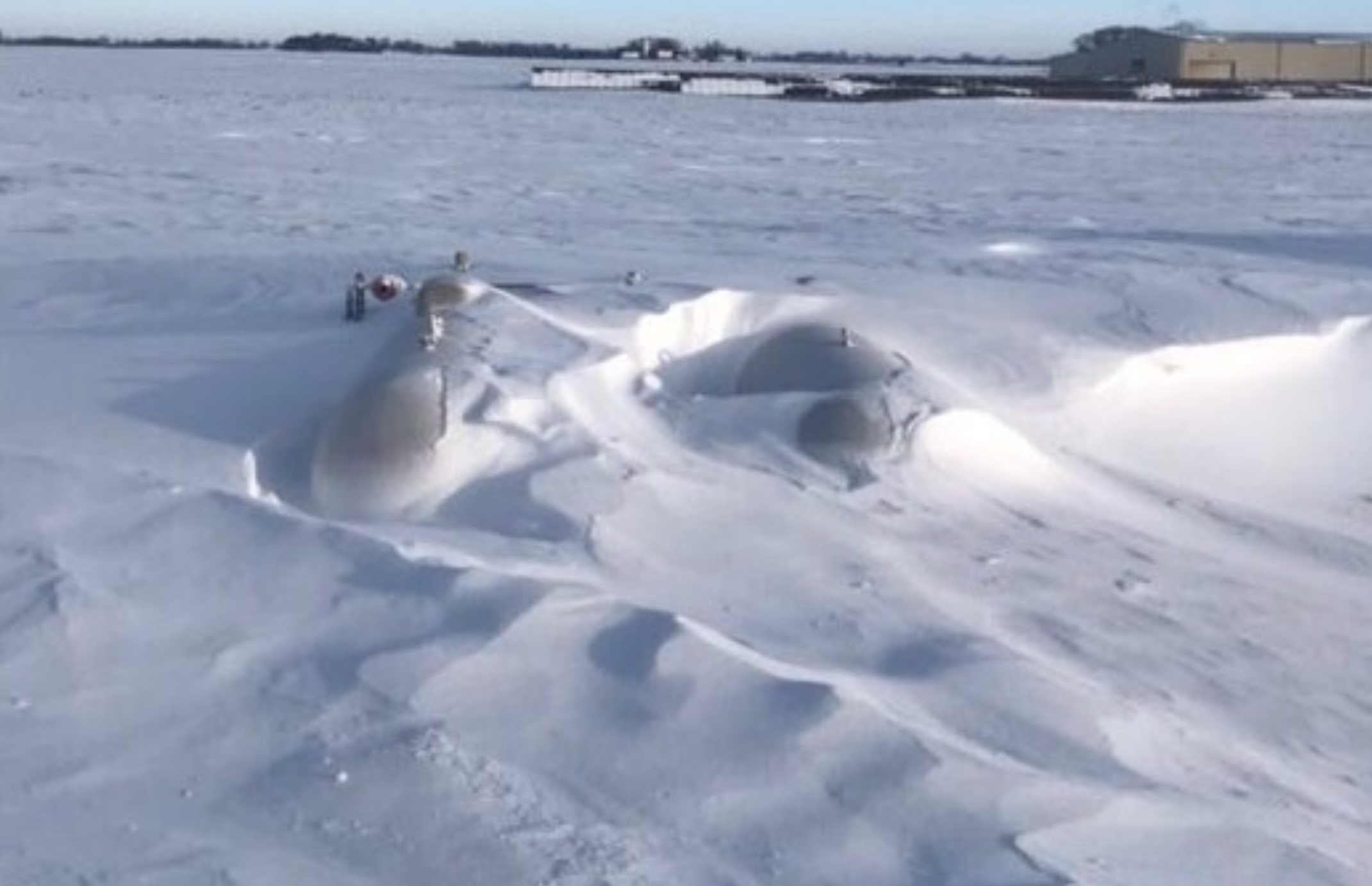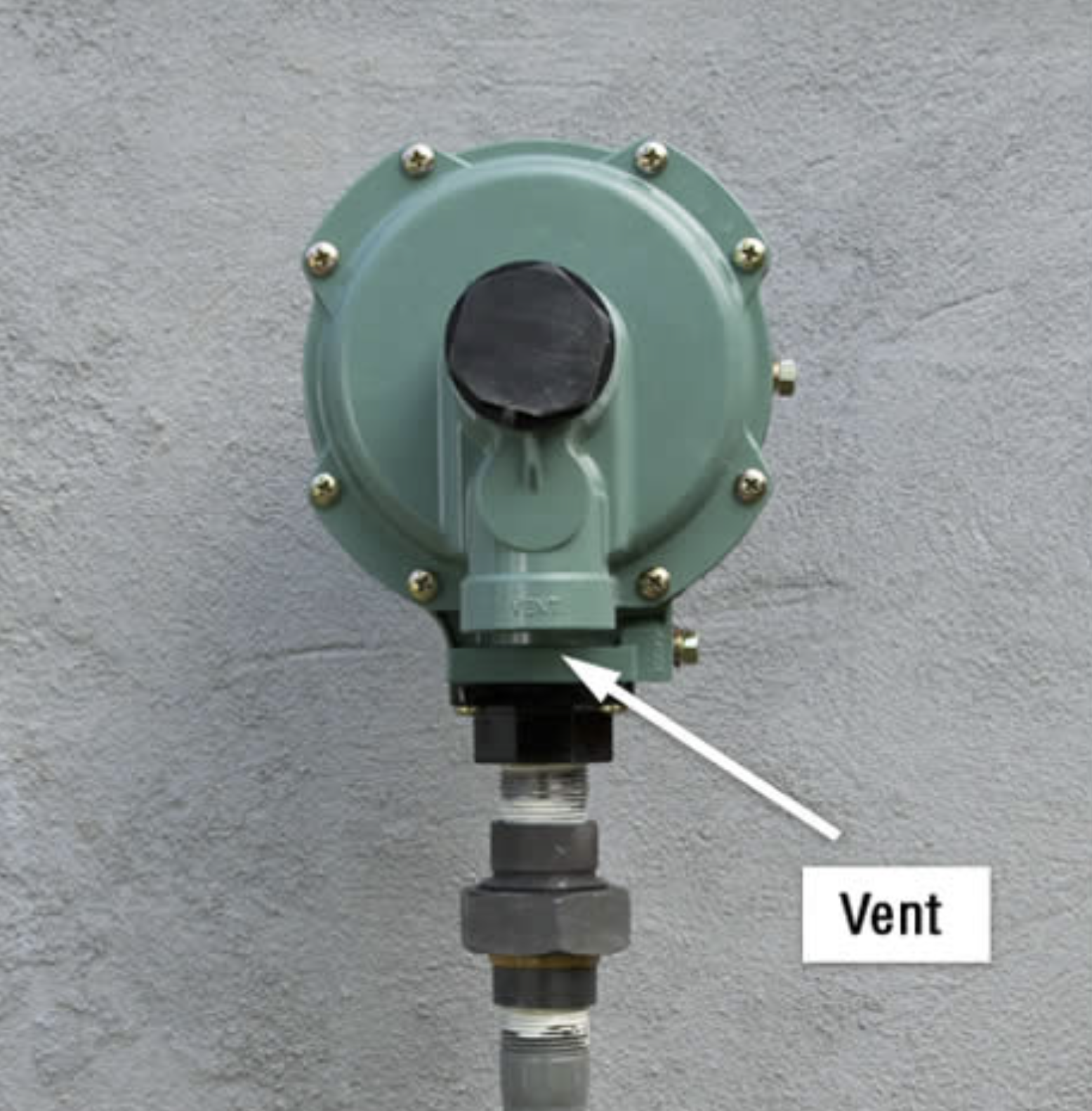In addition to clearing driveways and paths to your propane tanks so deliveries can be made, you’ll also want to clear snow build up on and around your tank. Snow buildup on your propane tank can affect the performance of the propane system.
Please review the below information regarding snow accumulation.
Clear driveways and pathways to propane tanks
- Keep the tank area and a path to the tank free of snow. (See photo #1)
- This ensures that you, your propane delivery driver, and emergency personnel can access your tank in the event of an emergency.
- Please remember that a propane delivery truck needs at least a 3-foot-wide path to be able to deliver fuel to your home.
- When plowing, snow blowing, or shoveling, do not push or pile snow around your tank, meter, regulator, or piping.

Keep snow and ice from accumulating on propane equipment
- Snow or ice accumulation can potentially cause parts of your propane system to crack or break, resulting in a gas leak.
- NEVER pour water on your tank or regulator! If needed, use only a warm dishtowel.
- When your tank is completely covered in snow, it insulates your tank. This can create issues with the propane being able to vaporize. It could cause your system to stop working, even if you still have propane in the tank.It is your responsibility to make sure that all propane pipes, valves, regulators, and tanks are clear of snow and ice. (See photo #2,these tanks are covered and creating a dangerous situation)
- Gently brush away snow or ice that has accumulated around the tank, meter, regulator, and any other piping.
- If you notice any snow or ice buildup that cannot be removed easily, contact your propane retailer immediately.
- DO NOT attempt to remove snow or ice by kicking or hitting equipment.

Keep vents clear
- Appliance vents and chimney flues must ALWAYS be clear of snow or ice.
- Some homes may have “direct” vents, which are close to the ground.
- Improper venting can cause carbon monoxide to become trapped in your home, causing serious illness or even death.
Mark your tank and regulator
- Mark your tank with a brightly colored stake or flag taller than the maximum anticipated snow depth.
- Mark your secondary pressure regulator. It is usually near the side of your home (See photo #3).
- It is important to mark your tank and equipment to enable emergency and propane service personnel to always locate it.
- If you have any specific questions, or need more information about your specific propane system, please reach out to your propane supplier.

If you have specific questions, concerns, or need more specific information about your propane system, call us at 320-256-3680.
